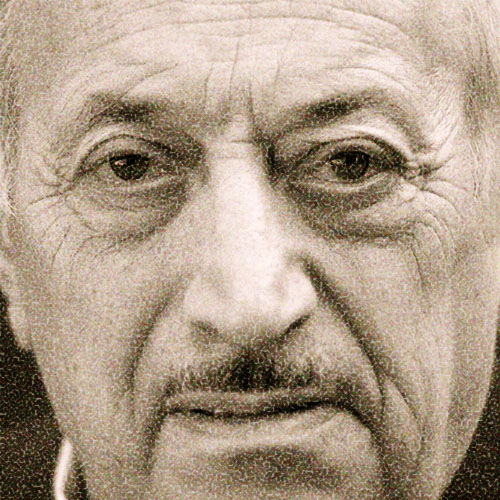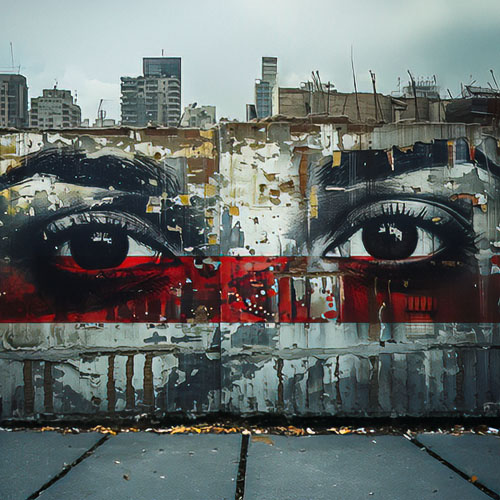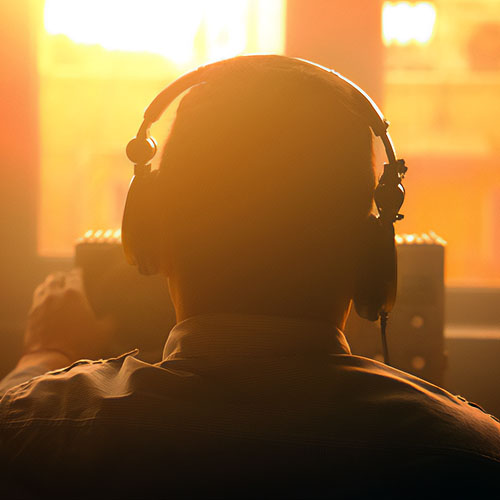The incredibly brutal dictatorship of Guatemala is systematically murdering anyone who dares oppose its power. This shocking on-the-scene report describes the terror and atrocities committed by a government that the Reagan administration is determined to support.
Latin America Holocaust
We are the great majority who want to live and work in peace. Let us unite with Guatemala and work for peace.… — Paid media announcement of the Guatemalan presidency.
The gay little jingle seemed to blare from tinny AM radios in every house I passed as I made my way earlier this year down the dusty main street of San Juan Comalapa, a remote village of 8,000 Indians in the western highlands of Guatemala.
The joy-filled tune, which extolled the government’s struggle against the Communists who were suddenly cropping up everywhere in Guatemala and Central America, was very much at odds with the mood of the people studying my course. As a Peace Corps volunteer working in Comalapa 18 months earlier, I had often walked this road from my house to the market in the central park-greeting friends, making purchases in the dry-goods shops, stopping for coffee in the corner cafe. Though many townspeople still recognized me as I retraced the route, few expressed anything beyond a silent, suspicious nod.
The buoyancy and the charm of the village that I had known so well were gone. The colorful processions and gala weddings of the San Juan Catholic church had been replaced by patrols of soldiers made up in camouflage fatigues and bulletproof vests, fingering well-oiled submachine guns. Gone, too, was the Spanish priest, Father Angel, who had worked tirelessly to raise funds for the new church, the new school, virtually the new everything that had needed reconstructing in the wake of the 1976 earthquake. He had finally received one death threat too many for allegedly aiding los comunistas through his work, and he had fled to Spain.
Meetings and work sessions had ceased in the cooperative where I had applied my B.S. in business administration as an adviser; they had been banned as “clandestine activities” by the local military commander, along with meetings of school PTAs, church groups, the municipal council, other cooperatives, and even the local chapter of the Alcoholics Anonymous. The only gathering of three persons or more not requiring special permission was the daily market, which today, as every day, was closely watched by a squad of soldiers.
But the fearful glances of the people hurriedly brushing by me communicated best the utter absence of gaiety and the dwindling hope in Comalapa. The vacant stares hid terror so unrelenting that each day was nothing more than a brief respite from endless nights of mayhem and death. They silently testified that the radio announcement proclaiming peace at that moment was only a cruel mockery of the obvious: Guatemala was at war, and Comalapa had become one of her tortured victims.
Maj. Francisco D’jalma Dominguez, the public-relations director for the Guatemalan Armed Forces, stood before a map of Guatemala on his office wall. Well-groomed and smartly dressed in his olive green uniform, he looked every bit the professional soldier.
Gesturing toward the eastern seaboard, he proudly recounted the army’s exploits there a decade ago under the leadership of Col. Carlos Arana Osorio, the “Jackal of Zacapa” of Guatemalan lore, in putting down an uprising led by a young Marxist university student named Yon Sosa. The undiluted praise for Arana’s splendid work, for which he was anointed president in 1970 by Guatemala’s political bosses, didn’t include mention of the estimated 15,000 civilians killed during the five-year campaign or the helping hand given by counterinsurgency “advisers” of the U.S. Southern Command in Panama.
“The problem today,” the major continued, sweeping his hand leftward over the western highlands, “is that Communists are trying to stir up the Indians. But the army, I assure you, will protect them from these damned extremists.” With that, he excused himself to attend to a phone call, giving me pause to reflect on this alarming state of affairs.
During my 33 months of working in the highlands I had been under the impression that poverty, not the importation of foreign ideologies, was the root of widespread disenchantment with the nation’s political system among Guatemala’s nearly 4 million Indians. Illiteracy, malnutrition, and racial discrimination defined their lives; as farmers and laborers, Indians earn less than $300 yearly and their children suffer mortality rates exceeding 50 percent in some regions.
The lack of interest and knowledge I had encountered just 18 months earlier among Indians toward the small Marxist guerrilla groups operating in the northern hinterlands was matched only by their scorn and cynicism for the country’s electoral system, which offered a ballot of generals and colonels as presidential candidates every four years. (Barely 8 percent of adult Guatemalans elected the newest general-president in 1978, Romeo Lucas Garda.) Neither the guerrillas nor the polls seemed to offer them what they really wanted-sufficient land to enable them to feed themselves properly. Could this be, I thought to ask the major, the lingering cause of the latest unrest?
“Ten to 12 men lined themselves along the wall opposite the screaming mother and her six children and unleashed a hail of gunfire.”
But discussion has never been the preferred way for seeking solutions to problems in Guatemala, and even less so since General Lucas inherited power. In fact, he and the generals backing him seem to be convinced that peasants and workers are discontent with their miserable plight only when reminded of it by an array of loosely described “Communists.” So the generals have commenced with the physical elimination of these irritants; since January 1979 at least 5,500 persons have been murdered for political motives, including scores of union and cooperative officials, six priests, more than 300 professors and students, and the leadership cores of the Christian and Social Democrat parties. Elias Barahona y Barahona, the exiled former press secretary to the Guatemalan interior minister, described in a September 1980 press conference in Panama how the chiefs of the Presidential Staff and Military Intelligence met regularly with top officials of the Ministries of Defense and the Interior to decide on the “definitive lists” of assassination victims, culled in part from information contributed by the Department of Trade Unions of the Labor Ministry. The meetings were held and the operations coordinated under the roof of the decorously titled “Presidential Special Services for Communications.”
The government’s traditional method of dealing with political opponents has once again become manifest to the rural population as well, after a lull in rural violence during which the earthquake reconstruction kept the government distracted. When dozens of Indian families gathered in the village of Panzos on May 29, 1978, to air complaints about large landowners encroaching on their small farm plots, they were met with a barrage of gunfire from army troops that left more than 100 men, women, and children dead in the central square. Lest that lesson be forgotten, 23 Indians from the department of El Quiche and 7 university students were burned alive by police units after they peacefully occupied the Spanish Embassy in Guatemala City to demand an international investigation into alleged atrocities committed by the army in several Quiche villages. President Lucas expressed his contrition for the incident by accusing the Spanish ambassador, who had repeatedly told the police to stay away from the embassy compound, of “complicity with leftist terrorists” and by asking indemnification from Spain for the deaths of two high-ranking Guatemalan officials who were visiting the embassy at the time of the blaze.
It is not surprising, then, that the major wasn’t so much interested in discussing these probable reasons for the simmering unrest in Guatemala as he was in detailing the army’s shopping list of new military hardware to control it, which would soon be submitted to the incoming Reagan administration. Helicopters, troop carriers, infrared equipment, short-takeoff and — landing aircraft — all, he said adamantly, were needed to root out the guerrillas infesting the countryside. I thanked him for this information, shook hands, and set out for Comalapa, one of many sites of this new threat perceived by the major.
When I left Comalapa in May 1979, the local arm of the Comite de Unidad Campesina (CUC) was a small group of educated townspeople who met on occasion to deliberate on highbrow topics like Pan-lndianism (a concept imported through contacts with North American organizations) and concientizacion, “consciousness-raising.” CUC’s long-term goals were to overcome the centuries of suspicion and divisiveness that had characterized Guatemala’s 22 ethnic Indian groups, to mold racial and class solidarity, and thereby enhance their economic and political power. For conventional wisdom had long held that if the Indians ever were effectively organized, the nation’s political structure, which is dominated by ladinos, persons of Spanish origin and culture, would crumble. In addition to composing more than half the population, Indians are the backbone of the work force for the export-agriculture sector, the source of roughly 75 percent of Guatemala’s yearly foreign-exchange earnings, and in recent years they had invaded urban industry. So the 600,000 Indians forced to migrate from their highland homes to the Pacific south coast to labor on the sprawling sugar cane, cotton, and coffee farms for a dollar a day became logical targets of CUC organizers.
Strikes mounted by CUC among sugar cane cutters and coffee pickers in 1980 resulted in congressional legislation increasing minimum daily wages to $3.20. Though the law was largely ignored by most landowners, the strikes nevertheless demonstrated CUC’s ability to disrupt production and thus, in the eyes of the government, had to be curbed.
Meanwhile, events elsewhere in Central America had so skewed political perceptions in Guatemala that all basic reforms — social, political, and economic — came to be viewed by the power brokers in Guatemala as irreversible steps toward Moscow.
“There are progressive elements in the army who were influential in bringing about certain reforms and a degree of liberalization under [ex-President Kjell] Langerud,” commented Gonzalo Yurrita, former secretary of Lucas’s own Revolutionary party. “Since the fall of Nicaragua and with what’s happening in El Salvador now, they’ve all shut up. The conservatives have completely taken over, and now we’re seeing the result.”
Yurrita, who resigned from the party in early 1980 to protest its lurch to the radical right, was assassinated several weeks after our discussion.
On the night of March 12, 1980, a team of armed and masked thugs kidnapped a reputed CUC activist in Comalapa named Nehemias Cumez while he was returning home with his nephew from the local office of the National Reconstruction program he had headed for four years: he has failed to reappear. Three weeks later an armored unit of 80 soldiers stationed itself on a wooded hill overlooking the main access road into Comalapa several kilometers from the village perimeter.
The army’s “protection,” as the major had promised, had begun in earnest.
I gazed through the coffin window at the grimacing face of Juan Mux, a bricklayer who had been a close friend. White linen neatly shrouded the deep knife wound in his throat and the do’zen or so bullet holes in his chest. Two nights earlier six masked men with submachine guns had broken into his home and dragged him away after they beat his wife and eldest son, who had clung to him, begging for his life.
It was past midnight on October 5, 1980. More than 200 townspeople had waited since eight o’clock that evening in Juan’s home, when word first arrived that his corpse had been found in a popular recreation site called Los Aposentos, 40 miles away. He was the sixth murder victim in Comalapa in four months. Shortly after Cumez’s disappearance, another team of men had broken into his office and stolen the files listing his coworkers and committee leaders. Four of those leaders were now dead, including Juan and three others dragged from a bus by soldiers.
The next morning I sat drinking coffee with a friend and his elderly father and talked with them about the violence.
“It’s very bad,” the son sighed, slouching his shoulders. “Why is this happening to us? What have we done to deserve this?” Comalapa, his father noted, hadn’t had a murder in 40 years before this. I asked what the townspeople were going to do to stop the violence.
“What can we do?” the son shot back. “They come with machine guns, and we have sticks and machetes. If we try to do anything, there will only be a massacre.”
“A public-relations firm, headed until January 14, 1981, by Michael Deaver, one of Reagan’s chief aides, has been a registered agent of Guatemala since 1977.”
The massacre, however, had already begun, although in piecemeal fashion. In October four more men were kidnapped, tortured, and killed, and three of the bodies were left lying on the outskirts of town. The fourth, that of Roque Salazar, was apparently taken to one of the detention centers in Guatemala City where police interrogate prisoners; the corpse was recovered in a slum trash heap. As if turning the page of a torturer’s handbook, the young intern at San Juan de Dias hospital peeled the white sheet from the body so it could be identified by relatives: skin melted like candle wax by a blowtorch, a mouth with no teeth, eye sockets without eyes, a groin with no penis.
In November the body count escalated to 16, in December to 31, and by January to 51, all following the nightly kidnap-torture-murder routine. Less than half were ever reported in the national press, and these were invariably blamed, as in all cases of official violence, on “unknowns.” Though the majority were men and teenage boys, the list of victims also included a gray-haired bread-woman, several teenage girls, and a three-day-old baby. And the town’s indignation grew.
“Why are they killing us?” a father of seven asked me. He had narrowly escaped assassination days before by hiding under his bed as armed men beat down the door to his home. They killed his brother-in-law instead.
“I am a good, hard worker … all Comalapans are. We don’t have anything to do with anything!” He glanced behind him at his daughter, seated on the edge of the ragged bed. “ I have three sons and two daughters. I ask you, do I have time to be getting involved with these people they call guerrillas?” I listened in silence, for despite my college degree, for which he so much admired me, my ability to read books and newspapers, my grasp of what the world meant beyond the mountains ringing Comalapa, I had no answer for him.
By February the terror had become so pervasive, so stultifying, that families ceased even discussing it in their homes; preachers continued to remain silent about it on their pulpits. The butcher explained the reason to me one day as he looked nervously out the screened window of his shop.
“You must be very careful. There’s a lot of this around,” he warned, tugging on his earlobe.
Orejas, or “ears,” were said to be everywhere — informers coerced by the army into supplying the name of anyone who had ever been involved with CUC or known anyone in CUC or even mentioned the acronym in a drunken conversation. It was said that if an informer was unable to meet his quota of names with actual CUC collaborators, he simply substituted those of his personal enemies, thereby confirming his loyalty to the government and assuring for the moment his own protection. The names were then integrated into the notorious lista negra, the local directory of victims distributed to the assassins by army intelligence, G-2.
I received a personal introduction to the raw terror and helplessness of Camalapans while I was riding the bus one morning to Comalapa from Guatemala City. As the old Ford jostled around a bend in the road several kilometers from town at a point directly below the army camp, it was abruptly halted by a roadblock. Conversations immediately ceased as the passengers filed out to have their documents checked. Fumbling with my passport and a cigarette stubbornly lodged in my shirt pocket, I descended from the bus to find myself, along with the crowd of nervous Indians, staring into the eyes of our potential executioners.
Here was the missing link between the government’s pious claims of maintaining order amidst the “extremist violence” in the country and the army’s position at the very helm of it. Here was the unique hybrid of the Guatemalan security state — soldiers with the standard fatigues and Israeli-made Galil rifles of the Guatemalan Armed Forces but, to betray identification, bereft of any insignia indicative of rank or unit. The black hoods masking their faces on this pleasantly warm February morning, the same gorros worn by the men who came in the night to beat down doors and drag people into waiting vehicles with no license plates, were actually woolen helmet liners. Here was a paramilitary death squad.
As one soldier trained his rifle on the line of men strung with their arms held high along one side of the road, another wordlessly examined the identification of each. A third soldier, the leader of the squad — judging by the deference shown him — observed the procedure while clutching a sheet of paper he had extracted from his field jacket against which the passengers’ documents were checked. When my turn came, I explained wanly that I was a tourist visiting a Peace Corps Volunteer, who, incredibly, actually had remained in Comalapa during the months of terrorism. (I often wondered how forthright the Peace Corps had been in informing her family of the conditions under which she was living.) My answer was met with a hard stare but reluctant acceptance, and either no names had appeared on the lista negra that morning or the death squad was too unsettled by the presence of an American tourist to conduct its work. All the passengers were permitted to reboard the bus and continue into Comalapa.
Three days before, I was told, a 20-year-old youth had not been so lucky and was detained during a similar registration. Passengers who witnessed the incident informed his mother-in-law, Marie Isabel Tuyuc; she immediately gathered the family’s available cash and set out on foot for the army camp to bargain for the youth’s life.
“They told her they had no knowledge of his whereabouts,” a friend of Marie’s told me later. “She came back to Comalapa and borrowed more money from relatives and friends and went back the next day, but the soldiers only made fun of her. She got mad and called them evil men.”
That same evening Marie Isabel was to make headlines. As she stood in the presence of her six children making corn tortillas over a simple wood-burning stove, from 10 to 12 men arrived at her door in two sedans. They broke through the thin plywood door, lined themselves along the wall opposite the screaming mother and children, and unleashed a hail of gunfire that shook the entire village and left the seven in a shredded heap on the earthen floor. Quietly, unhurriedly, the men reentered the waiting vehicles and drove away as terrified neighbors peered through darkened windows.
Two days later, on February 11, 1981, the daily El lmparcial reported the family “massacred by unknowns.”
The colonel listening in silence had served for 18 months in Vietnam and was now a member of the Military Group of the U.S. Embassy in Guatemala City.
“They’re making all the same mistakes that were made in Vietnam, 11 he commented after hearing my account of the slaughter in Comalapa, which only confirmed reports of similar atrocities in other highland villages. The South Vietnamese government had become excessively brutal also, he said, and its indiscriminate zeal in trying to dislodge Vietcong from small rural villages had eventually cost it whatever popular support it had enjoyed among the peasantry. Was he seeing history repeat itself and the Guatemalan government creating enough enemies to someday destroy it?
The colonel lamented, of course, the deaths of 58 Comalapans, but more visibly distressing was the prospect of another domino falling because of the ineptness of another American-sponsored army. Since the CIA-backed overthrow of the reformist government of Jacobo Arbenz in 1954, the United States had given more than $40 million in military aid to Guatemala and trained more than 3,000 officers of the army and police. Fringe benefits were included from time to time, such as funds from the Alliance for Progress and AID for the hiring and training of special police, and Lyndon Johnson had generously offered a task force of counterinsurgency experts in the late 1960s.
“Twenty-three Indians and seven university students were burned alive after they peacefully occupied the Spanish Embassy to demand an investigation into atrocities.”
Indeed, the newest chain of upheavals in Central America was following a disturbing pattern. First Nicaragua fell, then El Salvador and Guatemala became embattled, and now even Honduras was feeling the rumblings of militant opposition to established rule — all the countries in the region, in fact, that historically had had the closest ties with the United States and had received the largest doses of military aid.
The military money well finally had run dry for Guatemala during the Carter administration, when the State Department started taking seriously a report by Sol Linowitz, urging that human rights be made an integral element of U.S. foreign policy. The new tack persuaded Carter gradually to reduce the arms flow to Guatemala as evidence accumulated of massive human-rights violations by the Langerud and Lucas regimes. In a flourish of proud statesmanship, Lucas ultimately volunteered to refuse any further aid, huffing that las gringos weren’t about to teach Guatemalans about democracy and indieting Carter, Linowitz, and every State Department official left of Curtis LeMay in an international Communist plot to undermine his “constitutional government. 11
As predictably happens to Central American dictators who lose U.S. support, things rapidly began to worsen. Guatemala’s traditional policy of forced pacification of the peasantry and repression of labor gave way under Lucas to a gloves-off war of extermination of all opponents, militant and nonmilitant alike. Guerrilla groups, bolstered by a growing stream of Indians fleeing army terrorism in dozens of villages, stepped up their raids on police and army garrisons, kidnappings of wealthy civilians for ransom, and occasional executions of landowners identified as participants in the murders of their workers. The generalized violence soon took its toll on the economy: in two years foreign reserves fell from more than $800 million to about $325 million. The Central Bank reported capital flight at $250 million in 1980 alone, a single-year record. Tourists, put off by international boycotts against the government’s repression and the unfavorable press reports leaking out on the situation, cut back their expenditures by at least 30 percent last year.
The reward for which the government has paid this hefty price is an insurgency movement which, rather than diminishing from the repression, is feeding itself and becoming a genuine threat, according to officials of the U.S. Embassy.
“If it’s going to be a long war of attrition, the army’s going to lose, 11 said a U.S. development specialist with 13 years’ experience in Guatemala. “These people are rapists, thieves, butchers. You can’t win an antiguerrilla war without the sympathy of the people, and the army doesn’t have it anymore.”
He related an incident typifying the army’s crude tactics. When guerrillas entered the village of Joyabaj in January 1981, they held a town meeting, freed some prisoners from the municipal jail, and set fire to the police station. Hours later the army arrived, promptly arrested eight “suspects,” whom they tortured in the mayor’s office, and left the corpses strung along the road out of town.
“People say the guerrillas aren’t a problem,” he continued, “but the army says they are and begins all the kidnaps and murders. So the attitude among a lot of people is ’Well, at least the guerrillas didn’t kill anybody.’”
Oftentimes, as with Comalapa, no provocation is needed to incur the army’s wrath, which operates on the theory that a dose of prevention is far more effective than a reactive cure.
“It’s very simple,” explained an ex-Maryknoll priest who still lives in the highlands on his old site. “The soldiers go into a town, maul it, and say, ‘This is what you get for not doing anything. Now try something.’”
The official body count from the mayhem in 1980 was 4,000, as documented by human-rights groups, but it might have been substantially higher if Comalapa was at all representative. Of the 58 deaths I was able personally to confirm in Comalapa for the 12-month period following the disappearance of Nehemias Cumez, 20 were reported in the press. The other deaths will probably never be heard about, unless the bodies turn up in one of the mass graves occasionally discovered in the ravines cutting through the mountainous countryside.
The panic sown by the army and its paramilitary appendages, such as the Death Squad, Eye for an Eye, the Secret Anti-Communist Army, and the White Hand (founded by Mario Sandoval Alarcon, who will be a presidential candidate in the forthcoming 1982 election), has created a combination of destabilizing circumstances that may persist for years to come. (See “The White Hand,” by Ernest Volkman and John Cummings, Penthouse, June 1979.) Nearly half the adult and adolescent males in Comalapa have fled for their lives, leaving their families shorthanded in tending to the vital corn, bean, and wheat crops that guarantee survival. To provide emergency income, many families consequently have rented or sold large portions of their land. In areas of El Quiche, serious hunger is already affecting some villages where migration has been rampant.
“There is a tremendous rural-urban migration that is worse than anyone wants to admit,” said a Guatemalan agricultural extensionist. “Slums in Guatemala City are jammed with Quichelefios-unemployed but too afraid to go back.”
A stroll down Sixth Avenue in Guatemala City provides ample supporting evidence. Dozens of Indians wander along the broken sidewalks, peering through plate-glass windows at twentieth-century goods, enjoying their newfound anonymity. Their families will continue to grow hungry as their unemployment lingers on, until they will be left with two choices: running the risk of extermination by returning to their villages or joining the guerrillas, who at least can offer food and protection.
Perhaps no outsiders are more alarmed by the deteriorating situation than the Reagan State Department is. Secretary of State Alexander M. Haig, Jr., has already issued apocalyptic warnings of Communist “hit lists” that have been drawn up for Central America. But intervening militarily to get a grip on the accelerating chaos in Guatemala, which seems to be the intention of the new administration, will require considerable diplomatic agility and will test Haig’s capacity for self-delusion to the fullest.
He should be equal to the task if El Salvador is a reliable signal. After all, Salvadoran security forces could murder four American churchwomen and yet have their arms increased fivefold by the understanding Reagan administration. Who is to say, then, that a few thousand dead Guatemalans and some slips of Lucas’s blustery tongue should stand between old friends?
The patching of ties actually was in progress before the November elections, when close Reagan aides made junkets to Guatemala to assure businessmen and government officials that “things would be changing” in the event of a Reagan victory. Those gestures were warmly reciprocated with illegal campaign contributions to the Reagan campaign by wealthy Guatemalan citizens, according to taped conversations published in an October report by the Washington-based Council on Hemispheric Affairs. Roger Fontaine, the ultraright Latin American expert nominated by Reagan to the National Security Council, told the Miami Herald in a July 1980 interview that it was “ pretty clear that Guatemalans will be given what aid they needed in order to defend themselves against an armed minority aided and abetted by Cuba” should Reagan win.
“Since January 1979 at least 5,500 persons have been murdered for political motives, including union officials, priests, professors, and the leaders of the opposition political parties.”
His position has since been strongly seconded by U.N. ambassador Jeane Kirkpatrick, who stoutly believes that U.S. support for “moderately repressive authoritarian governments,” as Guatemala’s has been defined, should always be preferable to supporting “totalitarian” regimes, that is, Nicaragua’s, however benign. Notwithstanding the question Guatemala’s classification raises as to what is necessary to qualify as an unsupportable “fascist” state, the message here is that a government can butcher and plunder its citizens all it wishes and count on U.S. aid to further it along, as long as it does so under the aegis of free enterprise. However, the professed sympathies of the new administration for the beleaguered Guatemalans is not only philosophical but also tinged with personal and professional overtones. Deaver and Hannaford — a Washington-and-Los-Angeles-based public-relations firm headed until January 14, 1981, by Michael Deaver, one of Reagan’s chief aides — has been a registered agent of Guatemala since 1977. The firm has received at least $125,000 thus far from a right-wing Guatemalan lobby group, the Amigos del Pais, in order to further the reestablishment of close ties between the two governments.
Explaining how Reagan and Haig fit together with the concepts about the United States of my friends in Comalapa proved a formidable task, especially when they asked me if I could go to the U.S. Embassy and tell what was happening in Comalapa. I arranged for a few Comalapans to meet with an embassy official and describe their experiences. This meeting seemed to inspire my friends with a glimmer of hope. They were assured that a “thorough report” would be prepared and forwarded to the appropriate offices in Washington.
But how does one explain the paradoxes of a government, a society, that sends a Peace Corps volunteer to spread a few nuggets of goodwill and faith among the poor and to love them in their poverty and then proposes to refortify their executioners with weaponry and training? Was it simply the same enormous self-delusion and conceit that enabled the Guatemalan government to play gay little jingles of peace and love while conducting a willful policy of genocide against its citizens?
The thought troubled me as I rambled down the dusty street in Comalapa and ducked into my favorite cafe, La Posada, to inquire about an old friend.
“Juanita? He’s not here anymore,” said the young girl serving tables. Only later did the real meaning of that harmless answer become clear, when the butcher somewhat whimsically clasped his palms together in altar-boy fashion and glanced skyward: “Oh, he’s with the little angels.”
I continued down the road, past the deserted house of Nehemias Cumez and the graveyard with its fresh mounds of dirt, past the abandoned parish house and the market with its vigilant guard, and arrived at the house of a family of close friends.
The mother sat inside on the bare concrete floor, scraping kernels of corn from the cob and letting them fall into an old straw basket. The house had been empty for some time, ever since the father fled and the mother and young children had begun sleeping together with two other families in another house for protection. A small bed pressed into a corner was the only remaining piece of furniture; scraps of old calendars and other debris on the floor enhanced the feeling of barrenness. “It’s gotten so dirty, since no one stays here anymore,” she apologized.
Even the family photos had been taken down off the walls and hidden. The death squads, she explained, made a habit of taking them during their raids in case they were needed to identify future victims.
I said goodbye quickly, with the awkwardness that accompanies farewells with uncertain futures. We didn’t know whether she would be alive when I returned to Guatemala, or any of them for that matter. We also didn’t know if I would ever be able to return.
Regardless, she consoled me, the story must be told.
To this day, massive travel restrictions, “advisories” and downright warnings exist for Guatemala. It’s a real shame for such a beautiful country full of many wonderful people.
























